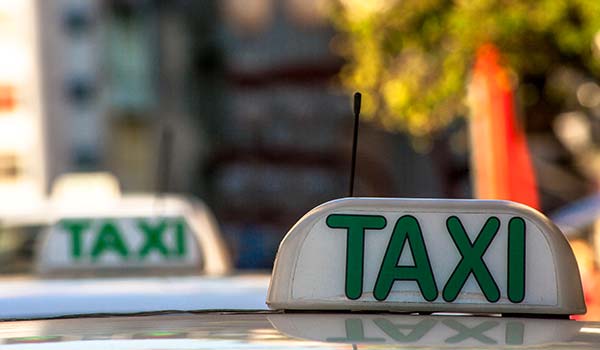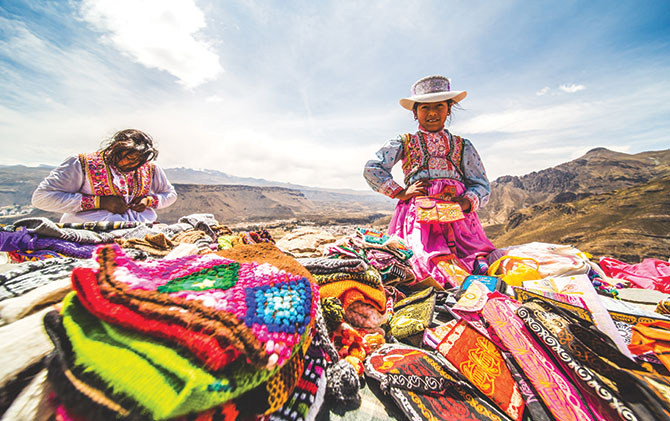This website uses cookies so that we can provide you with the best user experience possible. Cookie information is stored in your browser and performs functions such as recognising you when you return to our website and helping our team to understand which sections of the website you find most interesting and useful.
Costs of Travel in Peru
Peru isn’t an expensive destination, with lots of great value shopping and eating opportunities even in touristy areas. Prices remain comparable to other destinations in Latin America.
Food & Drink
Click here to read about Food and Drink in Peru .
Private City Sightseeing Tour in Peru
These vary depending on the size of the group and three destination. See below for suggestions
Admission Fees
E.g. World Heritage Sites and optional excursions you choose in your free time.
Any other tips and government taxes
Donations at sacred sites, churches etc
Souvenirs
Duty free
Incidental items such as SIM cards, medicine.. etc
Taxi/Three-wheeler Fares

Taxi fares are mainly unmetered. You will need to negotiate a price for every ride before you set off. If you think the fare is too high, say no thank you and change taxi. Easier, and more polite, than arguing about it on arrival.
Tipping etiquette and costs in peru
Tips should be considered purely discretionary – they’re generally not expected in Peru. Locals don’t usually tip in restaurants or bars. However, gratuities are appreciated, particularly in mid- to high-level restaurants. If you’d like to tip bar staff, there’s no need to tip per drink or round. One tip at the end will suffice. Whilst you don’t need to tip for taxi or mototaxi rides, you can if you choose. For example, you may choose to tip if your driver handles large heavy bags, or round up the fare if you like.
Suggested tipping amounts for other services (none of which are obligatory):
- 5 to 10 soles for a museum guide for a couple of hours (depending on level of service)
- US$10 to $20 per day tip for a multi-day excursion tour guide (See Inca Trail Trek guide for specific tipping advice)
- 1 to 2 soles tip for hotel bag porters (per large bag)
- 1 to 2 soles tip per day for hotel room attendants
- US$10 tip for a full day driver/tour guide – but this can vary greatly and different amounts may be expected. It may be better to agree to an amount before you depart.
- Up to 10% of the bill at mid- to upscale restaurants, unless a service charge is on the bill
- A 1 or 5 soles tip may be requested for a photo of a local person in traditional dress posing for photos in a tourist location e.g. Cusco, Lima – so check before you take a picture
- If a local offers you directions, then suggests walking you to the destination, you may be asked for a propina (tip) on arrival.
- No tips are needed for public transport
The cost of a bargain
It’s not unheard of for prices offered to tourists to be inflated compared to prices offered to locals. Bargaining is a way of life in Peru and haggling at markets is therefore expected.
Be sure to shop around various shops and stalls. Compare the materials and quality of the goods before you start to negotiate prices with a seller. There will be so much on offer. You will see beautifully hand embroidered clothing, spices, art, fruit, spices, jewellery and gems on offer in most of the markets. It’s particularly important to know the market value of your item before you agree a price. Prices can vary widely according to quality and materials. Wool is a particularly tricky one to judge. Everywhere you go you’ll find ‘baby alpaca’, but perhaps it’s only maybe ‘alpaca’. There are plenty of sheep in Peru too!
Fair trade involves a bit of give and take, so it’s important to respect the effort, detail and skill that’s gone into making the product you’re buying. When haggling in Peru, you can generally achieve a mutually-acceptable discount of around 10 to 20% depending on the item concerned. If the price seems unreasonably high, you can always start at 50% off, but if there’s a long pause, complete indifference or even a hard ‘no’, don’t be too surprised! It’ll be easier to achieve bigger discounts if you buy more items off the same seller.
A fair price

If you come across a direct seller outside of a market environment, you can expect lower prices (assuming you’re not in a central tourist area). Bear in mind it’s possible they or their family actually made the product, so ask them a few questions to tease out their stories when negotiating your price – and make sure it’s fair to both parties.
It’s best to start with an open mind and friendly attitude, because it’s no fun bartering when things get heated or unfriendly. If at any stage you feel a negotiation has turned sour, it’s OK to walk away. You’re not obliged to pay a price you feel is unfair or unwarranted.
Duty Free Allowance
You may bring a reasonable number of personal equipment such as cameras, phones and laptops into Peru, but they have to be declared on arrival, and taken out of the country with you when you leave. Importing non-prescription drugs or unlicensed firearms of any form is an offence.
Don’t be tempted to buy anything made of any protected animal or plant species in Peru as export is strictly prohibited. The export of artistic and cultural articles is likewise not allowed.
See customs.uk for further information.
We are passionate adventure travelers who want to share the world and our travel experiences with everyone…
